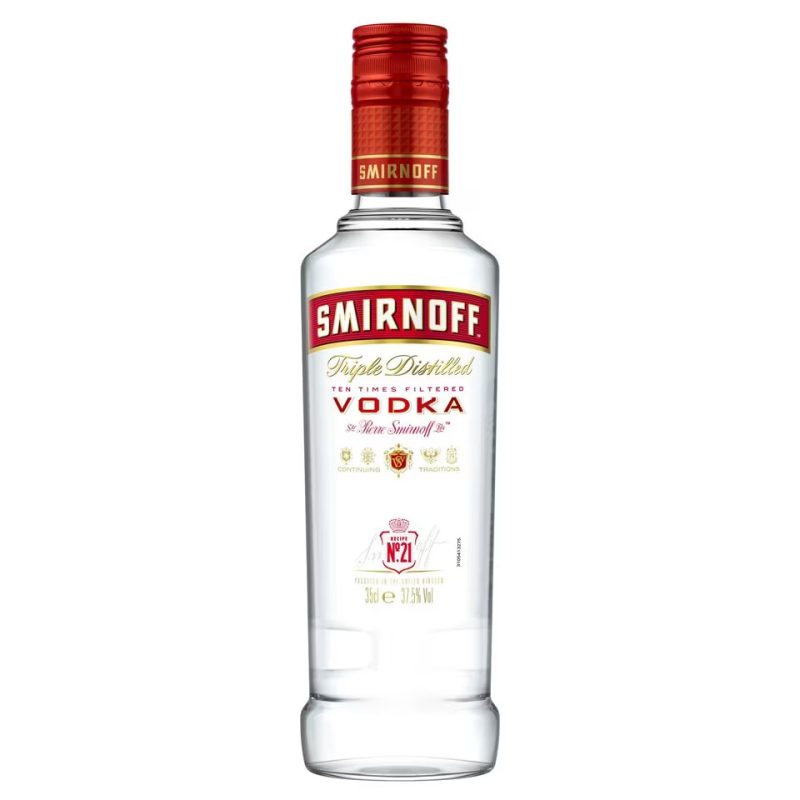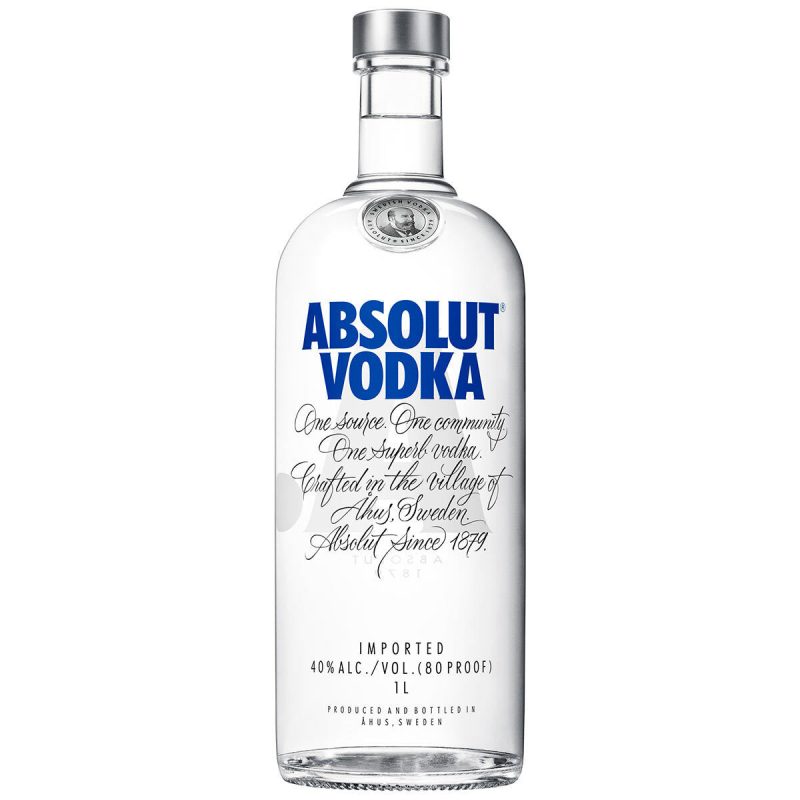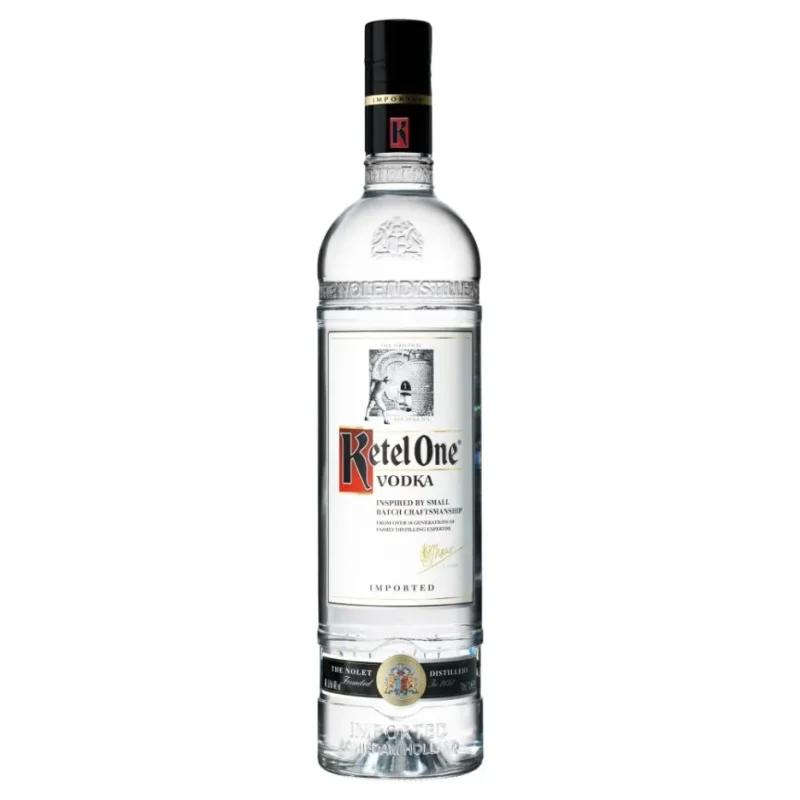Ever wondered if vodka is conjured up by a team of eccentric mad scientists in a hidden lab or if it’s simply the result of some ancient alchemy perfected over centuries? Buckle up, because we’re diving headfirst into the spirited and surprisingly intricate world of vodka production—a journey that’s equal parts science, art, and a dash of cheeky tradition. Whether you’re a cocktail connoisseur, a curious millennial, or a Gen Z rebel with a taste for the finer things, prepare to have your mind (and maybe your taste buds) blown.
How Do They Make Vodka Table of Contents
A Spirited History: Tracing Vodka’s Journey Through Time
The Building Blocks: Key Ingredients in Vodka Production
The Fermentation Fiesta: Turning Sugars into Spirits
Distillation Demystified: From Wash to Impeccable Spirit
Filtration: The Secret to Smooth, Clean Vodka
The Art and Science of Vodka: A Harmonious Blend
The Global Tapestry: Vodka Production Around the World
Mythbusting Vodka: Debunking Common Misconceptions
The Cocktail Connection: Vodka’s Versatile Role in Mixology
Sustainability and Innovation: The Future of Vodka Production
Resources and Community Support: Your Next Steps in Vodka Appreciation
FAQ: Uncorking Your Vodka Production Questions
Vodka Around the Clock: Pairing, Tasting, and Experimenting
A Toast to the Craft: Celebrating Vodka’s Unmistakable Spirit
Charting Your Vodka Journey: Next Steps for the Curious Enthusiast
Vodka Production in a Nutshell: The Final Pour
Looking For The Best Vodka? You'll Love These Vodka Guides...
A Spirited History: Tracing Vodka’s Journey Through Time
Vodka’s origins are as murky as a midnight hangover but as storied as your favorite vintage meme. The word “vodka” is derived from the Slavic word “voda” meaning water, and while this spirit might appear as crystal-clear as your refreshed Instagram feed, its history dates back centuries in Eastern Europe. From the frost-bitten landscapes of Russia and Poland to the modern-day distilleries in the United States and beyond, vodka has evolved from a humble folk remedy to a global icon in the world of liquors.
In ancient times, vodka wasn’t exactly the refined cocktail staple it is today. It was used as both a medicinal tonic and a means to keep warm during harsh winters. Imagine your great-great-grandparents huddled around a fire, sipping on something that was as much about surviving the cold as it was about celebrating life. Over time, refinements in production techniques turned this rustic brew into the smooth, sophisticated spirit we now enjoy in our carefully curated cocktail photos.
Today, vodka stands as a testament to human ingenuity—a spirit that marries the art of distillation with modern innovation, ensuring that each sip delivers a pure, clean taste that can be enjoyed neat, on the rocks, or as the foundation of the perfect cocktail.
The Building Blocks: Key Ingredients in Vodka Production
Let’s break it down like a TikTok dance tutorial: vodka production starts with just a few simple yet crucial ingredients. The two main stars of the show are water and a fermentable base. Depending on the region and the distillery’s secret family recipe, that base might be grains (like wheat, rye, or corn), potatoes, or even fruits. The quality of these basic ingredients plays a monumental role in crafting vodka that’s as smooth as your favorite DM slide.
Water: You might think water is just the background actor in this production, but in vodka, it’s the leading role. Great vodka starts with pure, high-quality water, often sourced from glacial springs or deep wells that have been naturally filtered over time. This water is pivotal not only for fermentation but also for diluting the spirit to perfection.
Best Budget Vodkas Ranked
Fermentable Base: Whether it’s the crisp, clean taste of rye or the earthy flavor of potatoes, the choice of fermentable base sets the stage for vodka’s flavor profile. For example, Eastern European vodkas might proudly boast a potato base, while many Western distilleries opt for grains. Each ingredient brings its own set of characteristics, adding layers of complexity to the final product.
Yeast: Although often overlooked, yeast is the tiny powerhouse behind fermentation. By converting sugars from the base ingredient into alcohol, yeast acts as the unsung hero in every batch of vodka. Different strains can also subtly influence the flavor nuances, making each producer’s vodka a unique brew.
The Fermentation Fiesta: Turning Sugars into Spirits
Picture fermentation as the wild party where simple sugars get transformed into alcohol, transforming the mundane into the marvelous. Once your chosen fermentable base is mashed and mixed with water, it’s time to introduce the yeast. As the yeast gets to work, it feasts on the sugars, producing alcohol and carbon dioxide in a biological rave that lasts several days.
During fermentation, the temperature and timing are meticulously controlled, much like setting the perfect vibe for a house party. Too hot, and the party gets wild and out of control; too cold, and everyone’s just standing around awkwardly. Master distillers know just how to keep the balance right, ensuring that the fermentation process yields a clean, consistent alcohol base that's ready for its next transformation.
The resulting liquid, commonly referred to as a “wash,” isn’t the final product by any means. It’s a humble beginning—a rough draft of what will eventually become the spirit that graces your cocktail glass.
Distillation Demystified: From Wash to Impeccable Spirit
Now, let’s talk about the real magic: distillation. Once the fermentation process wraps up, the wash is heated in a still. Here, alcohol—having a lower boiling point than water—begins to evaporate first. This vaporization separates the alcohol from impurities, a transformation that might remind you of that moment when your favorite filter magically enhances your selfies.
The rising alcohol vapors move through a cooling system where they condense back into liquid form. This step isn’t just about changing states of matter—it’s a careful process that demands precision. Distillers might perform multiple distillations to ensure the spirit achieves the coveted purity and smoothness. Think of it as a remix of your favorite track, each pass refining the beat until it’s irresistible.
In many modern distilleries, continuous column stills are employed to achieve a high degree of purity. Yet some aficionados swear by traditional pot stills for imparting subtle character and complexity. Whether it’s the industrial efficiency of a continuous system or the artisanal charm of a pot still, the choice of equipment significantly shapes the vodka’s final profile.
The outcome of distillation is an ultra-high-proof spirit, often clocking in at around 95% alcohol by volume. This raw, uncut spirit is far too potent for many palates and has to be tempered with the high-quality water we mentioned earlier.
Filtration: The Secret to Smooth, Clean Vodka
If distillation is the rockstar performance, filtration is the glamorous encore that leaves the audience in awe. The objective here is to remove any remaining impurities, ensuring that the vodka not only tastes clean but also delivers that iconic smooth finish. Many vodka aficionados insist that it’s this meticulous filtration step that truly sets apart a premium vodka from a run-of-the-mill spirit.
One of the most popular methods is charcoal filtration. Imagine passing the spirit through layers of activated charcoal—this process traps unwanted flavor compounds and impurities, much like a super-sleek Instagram moderator filters out the noise to reveal only the best content. In some cases, the vodka is filtered through other natural media such as quartz or even diamonds (yes, you read that right—diamond filtration is a real thing in the luxe world of vodka).
The number of filtration passes can vary wildly. Some distillers swear by multiple rounds of filtration to achieve perfection, while others believe in a more hands-off, natural approach. The debate over the “right” number of passes is almost as fierce as enthusiasts arguing over the best vodka cocktail—both perspectives hold their own charm.
After filtration, the spirit is typically diluted with pure water to reach the desired proof. This balancing act between concentration and dilution is vital; too much water and you risk losing character, too little and you might end up with something that burns hotter than your latest TikTok banger.
The Art and Science of Vodka: A Harmonious Blend
Production techniques aside, there’s an undeniable artistry in crafting vodka. It’s a science experiment meets culinary art, where precision equipment and age-old traditions coexist in perfect harmony. Master distillers combine technical expertise with intuition honed over years of experience, ensuring that each batch of vodka sings its own unique tune.
Consider the nuanced differences in flavor that even subtle variations in the fermentation or distillation process can cause. A few extra degrees of temperature here, one more filtering pass there, and you’re left with a spirit that may carry whispers of its original ingredients or hints of its geographical heritage. The result is vodka that can be enjoyed straight up in a chilled martini or mixed into a complex cocktail that sparks conversation among friends.
Innovation also plays a crucial role in the modern vodka landscape. With trends leaning towards craft and artisanal products, many distilleries are experimenting with exotic bases, unique water sources, and even heirloom yeast strains. This creative quest for distinction means that no two vodkas are exactly alike, much like how every smartphone model brings its own quirks and features to the table.
The Global Tapestry: Vodka Production Around the World
Vodka is an international citizen, embraced in bustling metropolitan bars and laid-back countryside pubs alike. Its production techniques can vary significantly depending on regional traditions and available resources, turning each bottle into a cross-cultural story waiting to be uncorked.
In Russia and Poland, vodka production is steeped in history and national pride. Producers here often adhere to time-honored methods passed down through generations. Whether it’s the use of locally sourced rye or the strict filtration protocols that have garnered international acclaim, Eastern European vodkas carry an aura of authenticity and legacy.
Across the Atlantic, American distilleries have taken a more experimental approach. With an eye for innovation and a willingness to break tradition, these producers mix age-old techniques with modern technology. They tap into the craft beverage revolution, offering vodkas that cater to diverse palates and even embrace organic and sustainable production practices.
Meanwhile, other corners of the globe—from Sweden to Japan—have embraced vodka production in their own unique ways, adapting the spirit to fit local tastes and climates. Each region brings with it not just a different recipe, but a distinct philosophy about what vodka should represent: purity, versatility, and above all, a spirit that’s as refreshing as it is resilient.
Mythbusting Vodka: Debunking Common Misconceptions
Over the years, vodka has attracted its fair share of myths—from the bizarre to the downright hilarious. Let’s clear the air on some of these misconceptions with a dose of humor and a pinch of science.
Myth #1: Vodka Is Just Flavored Water.
Sure, vodka is water at its core, but don’t be fooled by its clear appearance. The production process transforms humble water and simple ingredients into a spirit that carries a depth of flavor and character worthy of celebration. It’s like assuming the minimalist design of a modern smartphone means it lacks sophistication.
Myth #2: The More Expensive the Vodka, the Smoother It Is.
Price doesn’t always equate to perfection. While high-end vodkas may use additional filtration techniques or premium ingredients, many affordable options offer superb quality too. Much like fashion trends, what really matters is the craftsmanship behind the bottle, not just the price tag.
Myth #3: All Vodkas Taste the Same.
Anyone who’s sampled vodkas from different regions knows that flavor nuances exist—even if they’re subtle. Just as no two pairs of sneakers are exactly alike, the differences in ingredients, distillation, and filtration mean that each vodka carries its own signature style.
Myth #4: Vodka Must Be Distilled Multiple Times.
While multiple distillations can enhance purity, some distilleries opt for a single batch process that preserves more of the natural flavor. It’s all about balance. There isn’t one right way to craft a good vodka—only the method that best suits the desired flavor profile.
By busting these myths, we can better appreciate the craft that goes into making vodka—a process that’s both scientifically rigorous and artistically inspired.
The Cocktail Connection: Vodka’s Versatile Role in Mixology
While the production process of vodka is a fascinating tale of science and tradition, its true magic comes alive in the hands of innovative mixologists. Vodka’s neutral flavor profile makes it the perfect canvas for a kaleidoscope of cocktails, from the classic Martini to the ever-popular Moscow Mule.
For those who love to experiment, vodka’s versatility allows it to pair delightfully with everything from fresh fruits and herbs to spicy infusions. Imagine mixing vodka with a splash of elderflower tonic or a hint of cucumber and mint for a cocktail that’s as refreshing as a summer breeze on your favorite festival. The possibilities are endless—just like the creative spirit of today’s millennial and Gen Z innovators.
Modern bartenders have elevated vodka mixology into an art form, blending traditional recipes with contemporary twists. Whether you’re sipping a meticulously crafted cocktail at a swanky bar or shaking up a storm in your own kitchen, vodka offers a limitless playground for flavor exploration and social experimentation.
Sustainability and Innovation: The Future of Vodka Production
In a world where sustainability is more than just a buzzword, vodka producers are stepping up their game to reduce environmental impact. From sourcing locally grown, organic ingredients to implementing energy-efficient distillation methods, the industry is embracing green practices without compromising on quality.
Some distilleries are pioneering innovations like recycling heat generated during distillation and using eco-friendly packaging materials. These efforts not only translate into a smaller carbon footprint but also appeal to an eco-conscious consumer base that values ethical production practices.
The marriage of tradition and innovation is creating opportunities for artisanal brands to thrive in a competitive market. With customers increasingly demanding transparency and sustainability, the vodka of tomorrow promises to be as responsible as it is refined—a win-win for both the planet and your palate.
As technology advances, we might soon see even more radical approaches to vodka production. Imagine blockchain-powered supply chains ensuring every sip is ethically sourced or AI-driven fermentation processes that optimize flavor extraction at unprecedented levels. The future is bright—and clear.
Resources and Community Support: Your Next Steps in Vodka Appreciation
If you found yourself unexpectedly immersed in the science and art of vodka production, you’re in good company. The world of vodka is not just about drinking—it’s about community, exploration, and continuous learning. Whether you’re aspiring to become a home mixologist or simply wish to deepen your knowledge of what goes into your favorite spirit, there are plenty of resources and communities eager to welcome you.
Start by following renowned distilleries on social media, attending local tasting events, and even joining online forums dedicated to craft spirits. Numerous blogs, podcasts, and YouTube channels are devoted to demystifying the intricacies of vodka and sharing insider tips on everything from balancing flavors to sustainable production practices.
For those looking to dive deeper, consider enrolling in an online course or workshop focused on distillation and mixology. Many reputable institutions and artisanal producers offer immersive learning experiences that cater to both novices and seasoned connoisseurs.
Engaging with a community of like-minded aficionados not only broadens your understanding of vodka but also allows you to share your own experiments and discoveries. So, whether you’re planning a themed cocktail night with friends or curating your very own tasting session at home, remember that the world of vodka is vast, vibrant, and waiting for you to explore its endless possibilities.
FAQ: Uncorking Your Vodka Production Questions
We know you have questions, so we’ve distilled (pun intended) some of the most commonly asked ones about vodka production. Grab a pen—and maybe a shot glass—and get ready for some fun facts!
1. What exactly is vodka made from?
Vodka can be made from various fermentable bases including grains (such as wheat, rye, or corn), potatoes, and even fruits. The choice of base affects the flavor and character of the final spirit.
2. How important is water quality in vodka production?
Incredibly important! High-quality water is used not only during fermentation but also to dilute the spirit to the desired proof. Pure water is essential for producing a clean, smooth vodka.
3. Why is vodka distilled multiple times?
Multiple distillations are often employed to achieve a high level of purity by removing impurities and enhancing smoothness. However, some distillers prefer a single distillation process to retain more character.
4. What role does filtration play in making vodka smooth?
Filtration, typically through activated charcoal or other natural media, helps remove any remaining impurities after distillation. This step is key to producing the signature clean and crisp taste of premium vodka.
5. Does the fermentable base change the taste of the vodka?
Absolutely. Each base, whether it’s rye, potato, or corn, contributes subtle flavor nuances that distinguish one vodka from another. However, the distillation and filtration processes tend to smooth out these flavors so that the final product remains versatile.
6. Are there sustainable practices in vodka production?
Yes, many distilleries are adopting sustainable practices, from sourcing organic ingredients to implementing energy-efficient production methods and eco-friendly packaging.
7. What’s the best way to enjoy vodka?
Vodka is incredibly versatile! Whether you’re sipping it neat, chilling it over ice, or mixing it into your favorite cocktail, there's no wrong way to enjoy this spirit.
8. How do modern distilleries ensure consistency in flavor?
Consistency is achieved through precise control over fermentation, distillation, and filtration processes. Many producers also use advanced techniques like biofeedback during fermentation to monitor and maintain quality.
9. Can I try making vodka at home?
While home distilling might sound tempting, it’s highly regulated in many countries and requires specialized equipment and knowledge. It’s best to leave the art of vodka-making to the experts and enjoy the results.
10. What innovations might we see in vodka production in the future?
With technological advances and a growing focus on sustainability, future innovations could include enhanced distillation techniques, AI-driven process optimizations, and even novel, ethically sourced ingredients that push the boundaries of flavor.
Vodka Around the Clock: Pairing, Tasting, and Experimenting
Whether it’s a Friday night wind-down, a spirited brunch with friends, or a quiet evening of self-reflection, vodka plays well with any occasion. Its clean palate makes it a favorite for those who love mixing things up. Here are some inspiring ideas to elevate your vodka game:
Tasting Sessions: Organize a DIY vodka tasting party where you sample different styles and production methods. Take notes, compare the smoothness, and debate which has that extra “zing.” It’s like a wine tasting, but with plenty of room for laughter and casual banter.
Classic Cocktails: Experiment with old favorites like the Vodka Martini, Cosmopolitan, and Bloody Mary. Don’t be afraid to get creative—swap out garnishes, infuse unique flavors, or even try a vodka sour if you’re feeling adventurous.
Infusions at Home: For the experimental spirit, try infusing your vodka with local fruits, herbs, or spices. The infusion process is a fun, hands-on way to create personalized flavors that can elevate your homemade cocktails.
Food Pairings: While vodka might traditionally be enjoyed as a standalone spirit or in cocktails, pairing it with complementary foods can enhance the tasting experience. Think about traditional Eastern European snacks or modern fusion appetizers that bring out unexpected notes in your drink.
Dive into these experiments with the enthusiasm of a mixologist at a clandestine speakeasy. Your taste buds—much like your social media feed—deserve a little variety, and vodka’s versatility is here to deliver.
A Toast to the Craft: Celebrating Vodka’s Unmistakable Spirit
At its core, vodka is more than just a distilled spirit—it’s a testament to human creativity, cultural evolution, and the relentless pursuit of perfection. From its humble beginnings as a folk remedy to its current status as a global social lubricant, vodka embodies a spirit of reinvention that resonates with every generation.
The journey from grain or potato to a crystal-clear liquid in your glass is a process that marries tradition with innovation. Each batch tells a story of local heritage, scientific advancement, and the passion of distillers who continuously experiment and refine their craft. Whether sipped neat, served over ice, or mixed into an avant-garde cocktail, vodka is the perfect example of a spirit that has evolved while staying true to its roots.
So next time you raise a glass, remember that you’re not just enjoying a beverage—you’re partaking in a centuries-old ritual of transformation, creativity, and celebration. The next time you enjoy a perfectly crafted vodka cocktail, take a moment to appreciate the intricate process behind the scenes, from raw ingredient to that smooth, refreshing sip.
Charting Your Vodka Journey: Next Steps for the Curious Enthusiast
Ready to dive even deeper? Here are some ideas to keep your curiosity flowing and your cocktail shakers busy:
- Local Distillery Tours: Check out nearby distilleries that offer guided tours and tastings. It’s an immersive way to witness the craft firsthand and gather insider tips on what makes each bottle unique.
- Mixology Masterclasses: Enroll in a cocktail-making workshop to learn the art of balancing flavors and crafting signature vodka drinks. These classes are not only educational but also a blast to attend with friends.
- Join Vodka Communities: Whether online or offline, connect with fellow enthusiasts in forums, social media groups, or local meet-ups dedicated to the appreciation of fine spirits. Share recipes, reviews, and your own experiments.
- Read Up & Stay Informed: Follow industry blogs, podcasts, and YouTube channels that explore the latest trends in vodka production and craft cocktail innovation. Staying informed can enhance your drinking experience and maybe even inspire your next creative concoction.
- Experiment at Home: Don’t be afraid to experiment. Start building your own collection of different vodkas and try pairing them with a variety of mixers, herbs, fruits, and spices to discover what best tickles your fancy.
Each step you take toward exploring the world of vodka enriches your understanding and appreciation of this timeless spirit. With a world full of flavors waiting to be discovered, your journey has only just begun!
Vodka Production in a Nutshell: The Final Pour
From the selection of prime ingredients and the bustling fermentation process, through the rockstar performance of multi-stage distillation and the meticulous touch of filtration, vodka production is a symphony of science, art, and passion. Every sip encapsulates a storied history and the ingenuity of countless artisans who have refined this spirit over generations.
As you explore various brands and styles, take a moment to appreciate the craft behind that crystal-clear liquid. Whether it’s the nostalgia of a traditional method passed through generations or the daring experiments of modern distillers, vodka stands proudly as a beacon of innovation and timeless appeal.
So, here’s to unlocking the secrets of vodka—one meticulously distilled, beautifully filtered, and perfectly poured glass at a time. Cheers to discovering, experimenting, and celebrating a spirit that continues to evolve while staying true to its roots.
















